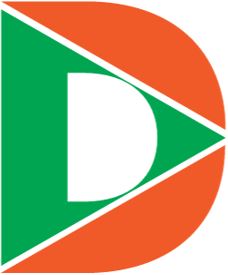How do Pads Help with Incontinence?
Understanding Incontinence
Incontinence is considered any involuntary leakage of urine or feces. There are a vast array of causes and factors that can contribute to an individual experiencing incontinence pads. It’s more common than one might think and affects people of all ages and genders.
Role of Pads in Managing Incontinence
Continence products can help people who have incontinence stay dry, comfortable, and lead a normal life. Pads and pants come in many shapes, sizes, and absorbencies. They can be disposable or Large reusable bed pads. Disposable products are designed to be used once and then thrown away.
Types of Incontinence Pads
What is a waterproof incontinence pad?
A waterproof pad is, as it suggests, a pad that is waterproof. This is referring to a pad having a waterproof backing, usually using some blend of plastic. Waterproof pads often come with an adhesive strip that can be used to secure the pad to your underwear. The adhesive strip is located on the waterproof side, as this is the side of the pad that faces away from the body and attaches to pants or underwear. The top of the pad is the absorbent part that is intended to be positioned against the part of the body experiencing leakage. A waterproof pad can sometimes offer wings or flaps to further assist in securing the pad’s positioning in underwear.
What is a non-waterproof incontinence pad?
Non-waterproof pads are just that, pads that are absorbent but do not have any waterproof backing. Non-waterproof pads are also referred to as booster pads. They are sometimes known as booster pads, as a common use of a non-waterproof pad is to insert it inside a product that is absorbent and waterproof (like a nappy/diaper). This is done to boost (or increase) the overall absorbency of an absorbent and waterproof pant.
When to use a non-waterproof pad
This may occur in instances where an incontinence pant is fitting correctly but the absorbency is not sufficient. Non-waterproof pads are used to offer ease of change when out and about. Instead of changing a complete nappy, which may require removing the outer layers of clothing, a booster pad is easily removed, disposed of, and replaced.
The Function of Incontinence Pads
Absorption Technology
Think of these pads as your personal moisture-wicking superheroes. They use advanced absorption technology to lock away leaks and keep you dry.
Odour Control Mechanisms
Let’s face it, nobody wants to carry an air of uncertainty around. These pads often come with odour-controlling features, bidding farewell to those unwelcome scents.
Comfort and Discreetness
Pads today are designed to be comfy and discreet. You might forget you’re wearing them, and that’s the idea.
Selecting the Right Incontinence Pad
Absorbency Levels
No one’s experience with incontinence is quite the same. Pads come in different absorbency levels, from light to heavy. It’s important to consider absorbency when selecting a pad that’s right for your needs.
Size Considerations
Pads come in different lengths and widths. It is crucial to consider the size to ensure the comfort and effectiveness of the pad.
Material Choices
These pads aren’t just layers; they’re a symphony of skin-friendly, moisture-locking, and breathable materials. If you have allergies to particular materials, it may be important to consider what the pad is made of.
Benefits of Using Incontinence Pads
Maintaining Active Lifestyle
Who says leaks should hold you back? With the right pad, you can jog, dance, and conquer mountains without worry.
Psychological Well-being
The confidence of staying leak-free can do wonders for your mental state. It’s like your security blanket against the unpredictable.
Discreet
Pads are both discreet to carry around in a bag or in your pocket. They can also be discreet whilst being worn if you opt for a smaller, slim pad.
Ease of change
As mentioned earlier, incontinence pads are very easy to change while out and about. Pads support ease of change and the freedom to continue living an active life.
Lifestyle Adjustments Alongside Pads
Pelvic Floor Exercises
Pads aren’t the only warriors here. Pelvic floor exercises add muscle to the team, aiding in controlling those untimely leaks.
Dietary Changes
What you eat can play a role in leakage. Some tweaks to your diet might help minimize those unwanted surprises.
Fluid Intake Management
Hydration is vital, but managing when and how much you drink can reduce the frequency of bathroom runs.

As a DIGITALTECHSIDE author, the majority of our articles have been focused on technology, blogging, business, lifestyle, social media, web design and development, e-commerce, money, health, education, entertainment, SEO, travel, and sports.
Contact us at digitaltechside@gmail.com if you have questions of anything.




